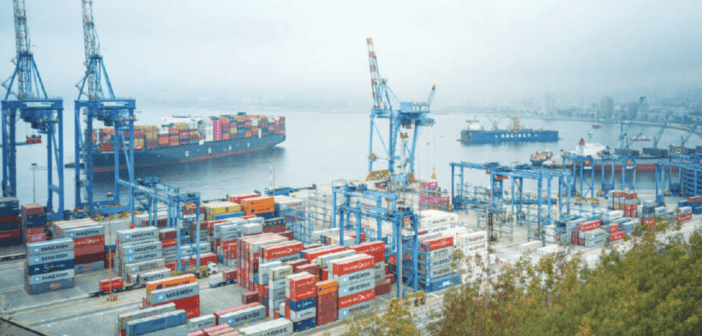By CPA Bashir Diba Abdi
The port of Mombasa has not been efficient in its terminal operation. Revenue generated is much below the target, compounded by competition from the port of Dar salaam and failure to modernize and expand its facility to meet the demand of the market in the region.
Globally, Governments are changing tactics of running the ports and adopting alternative port terminal management structures which has attracted other private players. Ports have become a business attracting the attention of large investment groups and equity fund managers.
In any alternative port terminal management structures, the government should clearly articulate the ultimate goals it intends to achieve and examine alternatives avail before entering in the contracts. Two alternatives are broadly used: mainly
- The public authority in charge of the port sector wants to restrict its public role by privatizing cargo handling operations and other no landlord activities. Partial privatization is the goal.
- The public entity wants to privatize the entire sector, including responsibilities that are generally considered to belong to the public domain. Ownership of port land, planning, investment and management are all transferred to private sector entities.
Contracting Out and Use of Management Contracts
In order improve port efficiency and performance the government can contract out to the private sector certain functions previously executed by the Kenya Port Authority. The government may decide to contract out some of its operations through a tender-bid procedure. The objectives of private sector engagement are to ensure;
- Minimize running cost –reduction is achieved -The functions can be performed at a price that is substantially lower than the cost of conducting them in the public sector.
- Multinational corporate with vast experience in port management may bid competitively.
- Government policy is to transfer gradually certain noncore activities of the public sector to the private sector.
KPA shortcomings
A Previous KPMG audit report has revealed how Kenya Ports Authority (KPA) loses millions of shillings due to loopholes in its revenue tracking systems.
Despite implementation of a multi-million-shilling information system, the KPA internal controls systems has failed to address existing shortcomings which exist due to lack of skills and poor coordination between Kenya Revenue Authority (KRA) and KPA. The report indicates that due these flaws, many ships left the Mombasa port without being checked and failure in paying the mandatory navigational, security and harbor charges denying KPA millions in revenue.
Now, to address the problem efficiency in KPA, what should the government do? To put the port under concession or privatization?
Concession or privatization? Which way to go for the Mombasa Port?
Basically, Concessions is a new term in port management all over the globe. It’s widely used in the port sector. A port concession is a contract in which a government transfers operating rights to private enterprise, which then engages in an activity conditional on government approval and subject to the terms of the contract.
How does port concession work?
Under the concession contracts, governments play a minimal role which mainly involves port management as public landlord for the facility. Governments will act mainly as regulators, while private firms will assume the responsibility for port operations. “Concession.”
Why Concessions
To understand the concession better, let’s examine the five main port management models based on the respective responsibility of the public and private sectors.
- Public service ports. In this kind of concession, the port authority for instance KPA performs the whole range of port-related services and owns all the infrastructure. Some ancillary services can be left to private companies. Because of the inefficiencies.
- Tool ports. Similar to the above but differs only in the private handling of its cargo operations, albeit the port authority still owns the terminal equipment. In several cases, a tool port is a transitional form between a public service port and a landlord port.
- Landlord ports. This is where the infrastructure, particularly terminals, are leased to private operating companies with the port authority retaining ownership of the land.
- Corporatized ports. Under this arrangement the ports have almost entirely been privatized, except that ownership remains public and often assumed as a majority shareholder. This management model is unique since it is the only one where ownership and control are separated,
- Private Service ports. The port authority is entirely privatized, with almost all the port functions under private control, with the public sector retaining a standard regulatory oversight. Still, public entities can be shareholders.
Source: adapted from The World Bank (2007) Port Reform Toolkit, Second Edition
Best practices in port concession
The household name in port concession around Africa is DP world. DP World is an Emirati multinational logistics company based in Dubai, United Arab Emirates. It specializes in cargo logistics, port terminal operations, maritime services and free trade zones.
DP World and Tanzania Ports Authority (TPA) has signed a 30-year concession agreement, to modernize, connect and undertake hinterland logistics projects for Dar es Salaam Port, at an initial cost of more than $250M for upgrade and investment to increase to $1BN. (Reuters)
In Western Coast of Southern African in Luanda, DP World, has signed a 20-year concession agreement with the Government of Angola to operate the Multipurpose Terminal (MPT) at the Port of Luanda. The initial cost of investment is US$190 million.
DP World plans to rehabilitate the existing infrastructure and acquire new equipment to bring operations in line with global standards and improve the efficiency of the MPT.
Where the concession has failed
Concession is not always successful there are instances where the arrangement has been terminated. A case in hand is the Djibouti port. On February 22, 2018, the Government of Djibouti cancelled its contract with DP World for the Doraleh Container Terminal (DCT) concession. According to Djibouti Ports and Free Zone Authority (DPFZA), the government took this decision in light of poor performance of the DCT, and to rectify irregularities in the agreement covering its operation.
It is necessary to address operation inefficiencies and to improve revenue generation to make it competitive in the wider region market. The government of Kenya should adopt alternative port terminal management structures which will attract other private players. In addition, Kenya should enter into a concession agreement with reputable multinational logistics companies.
Under this long-term lease system, a private company is allowed to operate a specified terminal for a defined time period. The concession/lease fees paid by the private terminal operator are used to upgrade and expand the facility.




